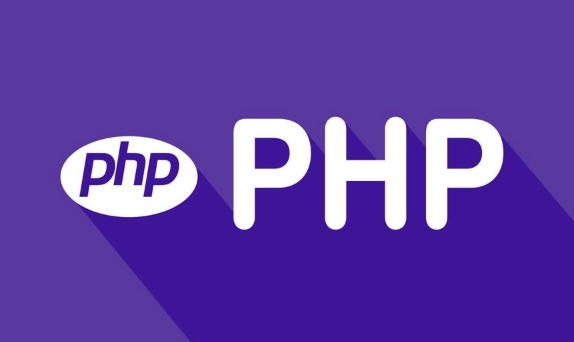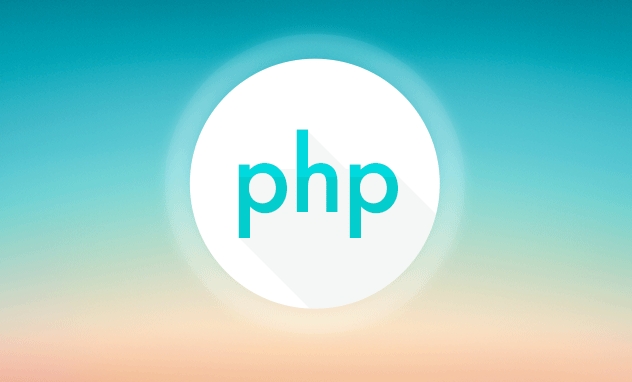 Backend Development
Backend Development
 PHP Tutorial
PHP Tutorial
 Discuss the benefits of using PDO over mysql_ functions (deprecated) for database interaction in php.
Discuss the benefits of using PDO over mysql_ functions (deprecated) for database interaction in php.
Discuss the benefits of using PDO over mysql_ functions (deprecated) for database interaction in php.
Jul 10, 2025 pm 01:41 PMUsing PDO instead of mysql functions in PHP offers significant advantages including enhanced security through prepared statements, database abstraction with support for multiple databases, improved error handling, and an object-oriented interface with advanced features. 1) PDO’s prepared statements prevent SQL injection by automatically escaping inputs. 2) It supports multiple databases, allowing easy switching via DSN without rewriting code. 3) PDO provides better error handling through exceptions for easier debugging. 4) It offers an object-oriented approach with support for transactions, stored procedures, and custom fetch modes, making it a more robust and future-proof choice than mysql functions.

Using PDO instead of the old mysql* functions in PHP is a big step up when it comes to building secure, flexible, and future-proof web applications. The mysql* extension was deprecated in PHP 5.5 and removed entirely in PHP 7.0, so sticking with it isn’t just outdated—it’s risky and unsupported.

Better Security with Prepared Statements
One of the biggest advantages of using PDO is its built-in support for prepared statements, which help protect your application from SQL injection attacks. With mysql_* functions, you had to manually escape user inputs using something like mysql_real_escape_string(), but that still left room for mistakes.
With PDO, you can use placeholders like :username or ?, bind values to them, and let PDO handle escaping internally. For example:

$stmt = $pdo->prepare('SELECT * FROM users WHERE username = :username');
$stmt->execute(['username' => $userInput]);This way, even if someone tries to inject malicious SQL through the input, it won't affect your query structure.
Support for Multiple Databases
PDO stands for PHP Data Objects, and one of its main design goals is database abstraction. If you ever need to switch databases (like from MySQL to PostgreSQL or SQLite), PDO makes it easier because its interface stays mostly the same—you just change the DSN (Data Source Name) and adjust any database-specific queries.

The mysql_* functions, on the other hand, are tightly bound to MySQL only. So if you start out small with MySQL and later move to another system, you'd have to rewrite all your database interaction code.
Easier Error Handling and Debugging
PDO gives you more control over how errors are handled. You can configure it to throw exceptions when something goes wrong, making debugging much easier. For example:
$pdo->setAttribute(PDO::ATTR_ERRMODE, PDO::ERRMODE_EXCEPTION);
If a query fails, you’ll get a clear exception message pointing to what went wrong. In contrast, mysql_* functions would often just return false without giving much detail, forcing you to guess where things went south.
Object-Oriented Interface and More Features
PDO uses an object-oriented approach, which fits better with modern PHP development practices. It supports features like:
- Transactions
- Stored procedures
- Fetching results as objects
- Custom fetch modes
These aren’t easily accessible or cleanly implemented in mysql_* functions.
And while it might feel like extra work at first—setting up a PDO connection and writing a few more lines compared to mysql_connect—it pays off quickly once your app grows in complexity.
So yes, switching from mysql_* to PDO does require a bit of learning and refactoring, but it's not complicated—and definitely worth it.
The above is the detailed content of Discuss the benefits of using PDO over mysql_ functions (deprecated) for database interaction in php.. For more information, please follow other related articles on the PHP Chinese website!

Hot AI Tools

Undress AI Tool
Undress images for free

Undresser.AI Undress
AI-powered app for creating realistic nude photos

AI Clothes Remover
Online AI tool for removing clothes from photos.

Clothoff.io
AI clothes remover

Video Face Swap
Swap faces in any video effortlessly with our completely free AI face swap tool!

Hot Article

Hot Tools

Notepad++7.3.1
Easy-to-use and free code editor

SublimeText3 Chinese version
Chinese version, very easy to use

Zend Studio 13.0.1
Powerful PHP integrated development environment

Dreamweaver CS6
Visual web development tools

SublimeText3 Mac version
God-level code editing software (SublimeText3)

Hot Topics
 Solution to PHP Fatal error: Call to undefined method PDO::prepare() in
Jun 22, 2023 pm 06:40 PM
Solution to PHP Fatal error: Call to undefined method PDO::prepare() in
Jun 22, 2023 pm 06:40 PM
PHP is a popular web development language that has been used for a long time. The PDO (PHP Data Object) class integrated in PHP is a common way for us to interact with the database during the development of web applications. However, a problem that some PHP developers often encounter is that when using the PDO class to interact with the database, they receive an error like this: PHPFatalerror:CalltoundefinedmethodPDO::prep
 PHP and PDO: How to perform bulk inserts and updates
Jul 28, 2023 pm 07:41 PM
PHP and PDO: How to perform bulk inserts and updates
Jul 28, 2023 pm 07:41 PM
PHP and PDO: How to perform batch inserts and updates Introduction: When using PHP to write database-related applications, you often encounter situations where you need to batch insert and update data. The traditional approach is to use loops to perform multiple database operations, but this method is inefficient. PHP's PDO (PHPDataObject) provides a more efficient way to perform batch insert and update operations. This article will introduce how to use PDO to implement batch insert and update operations. 1. Introduction to PDO: PDO is PH
 How to use PHP's PDO_PGSQL extension?
Jun 02, 2023 pm 06:10 PM
How to use PHP's PDO_PGSQL extension?
Jun 02, 2023 pm 06:10 PM
As a popular programming language, PHP is widely used in the field of web development. Among them, PHP's PDO_PGSQL extension is a commonly used PHP extension. It provides an interactive interface with the PostgreSQL database and can realize data transmission and interaction between PHP and PostgreSQL. This article will introduce in detail how to use PHP's PDO_PGSQL extension. 1. What is the PDO_PGSQL extension? PDO_PGSQL is an extension library of PHP, which
 PHP and PDO: How to handle JSON data in a database
Jul 29, 2023 pm 05:17 PM
PHP and PDO: How to handle JSON data in a database
Jul 29, 2023 pm 05:17 PM
PHP and PDO: How to handle JSON data in databases In modern web development, processing and storing large amounts of data is a very important task. With the popularity of mobile applications and cloud computing, more and more data are stored in databases in JSON (JavaScript Object Notation) format. As a commonly used server-side language, PHP's PDO (PHPDataObject) extension provides a convenient way to process and operate databases. Book
 PHP and PDO: How to perform paging queries and display data
Jul 29, 2023 pm 04:10 PM
PHP and PDO: How to perform paging queries and display data
Jul 29, 2023 pm 04:10 PM
PHP and PDO: How to query and display data in pages When developing web applications, querying and displaying data in pages is a very common requirement. Through paging, we can display a certain amount of data at a time, improving page loading speed and user experience. In PHP, the functions of paging query and display of data can be easily realized using the PHP Data Object (PDO) library. This article will introduce how to use PDO in PHP to query and display data by page, and provide corresponding code examples. 1. Create database and data tables
 PHP and PDO: How to perform a full-text search in a database
Jul 30, 2023 pm 04:33 PM
PHP and PDO: How to perform a full-text search in a database
Jul 30, 2023 pm 04:33 PM
PHP and PDO: How to perform a full-text search in a database In modern web applications, the database is a very important component. Full-text search is a very useful feature when we need to search for specific information from large amounts of data. PHP and PDO (PHPDataObjects) provide a simple yet powerful way to perform full-text searches in databases. This article will introduce how to use PHP and PDO to implement full-text search, and provide some sample code to demonstrate the process. first
 PHP PDO vs. mysqli: compare and contrast
Feb 19, 2024 pm 12:24 PM
PHP PDO vs. mysqli: compare and contrast
Feb 19, 2024 pm 12:24 PM
PDOPDO is an object-oriented database access abstraction layer that provides a unified interface for PHP, allowing you to use the same code to interact with different databases (such as Mysql, postgresql, oracle). PDO hides the complexity of underlying database connections and simplifies database operations. Advantages and Disadvantages Advantages: Unified interface, supports multiple databases, simplifies database operations, reduces development difficulty, provides prepared statements, improves security, supports transaction processing Disadvantages: performance may be slightly lower than native extensions, relies on external libraries, may increase overhead, demo code uses PDO Connect to mysql database: $db=newPDO("mysql:host=localhost;dbnam
 PHP PDO Tutorial: An Advanced Guide from Basics to Mastery
Feb 19, 2024 pm 06:30 PM
PHP PDO Tutorial: An Advanced Guide from Basics to Mastery
Feb 19, 2024 pm 06:30 PM
1. Introduction to PDO PDO is an extension library of PHP, which provides an object-oriented way to operate the database. PDO supports a variety of databases, including Mysql, postgresql, oracle, SQLServer, etc. PDO enables developers to use a unified API to operate different databases, which allows developers to easily switch between different databases. 2. PDO connects to the database. To use PDO to connect to the database, you first need to create a PDO object. The constructor of the PDO object receives three parameters: database type, host name, database username and password. For example, the following code creates an object that connects to a mysql database: $dsn="mysq





